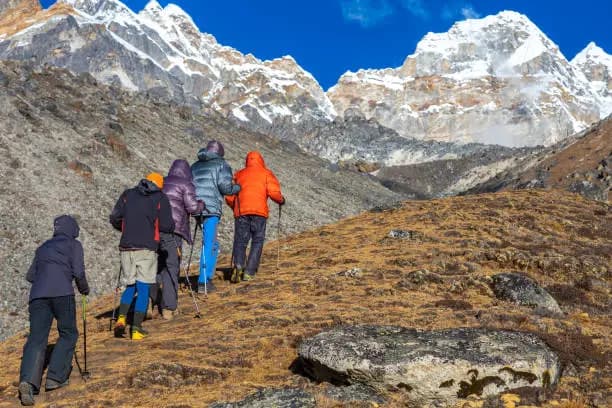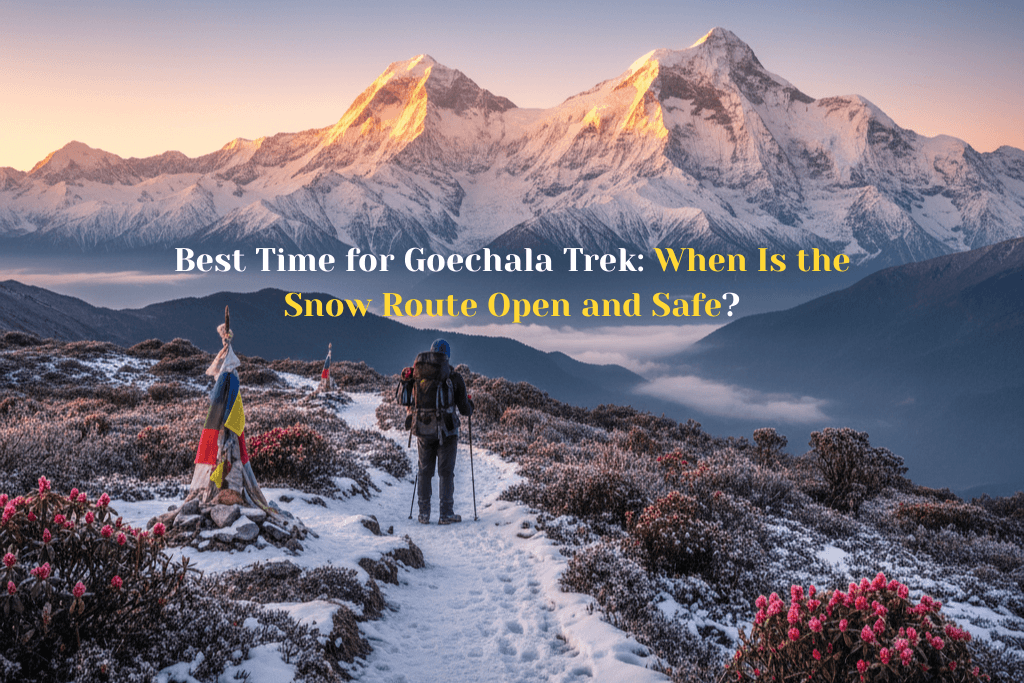Sandakphu Trek which has an altitude of 11,930 feet provides one of the best mountain views of the Eastern Himalayas. The journey, referred to as the Trekker Wonderland is located in Sikkim Himalaya in the Indian state of Sikkim and offers spectacular panoramic views of four of the five highest mountains in the world Mount Everest, Kanchenjunga, Lhotse, and Makalu. As an experienced trekker or a keen learner, Sandakphu Trek will be an experience like no other because of the various landscapes passed by, the rich biodiversity and the brimming local culture.
Table of Contents
- Overview of Sandakphu Trek
- Best Time to Visit
- Trek Difficulty and Duration
- Complete Itinerary
- Permits and Documentation
- What to Pack
- Accommodation Options
- Food and Water
- Transportation
- Safety Tips
- Cost Breakdown
- Photography Tips
- Conclusion
- FAQ
Overview of Sandakphu Trek
The Sandakphu Trek is the choicest among all Himalayan treks situated on the border area of India and Nepal. This high altitude trek goes through the Singalila National Park, which boasts varieties of flora such as rhododendrons, magnolias and fauna like the rare red panda. The trek takes you through picturesque villages, dense forests and alpine meadows and culminates at Sandakphu peak – the highest peak of West Bengal.
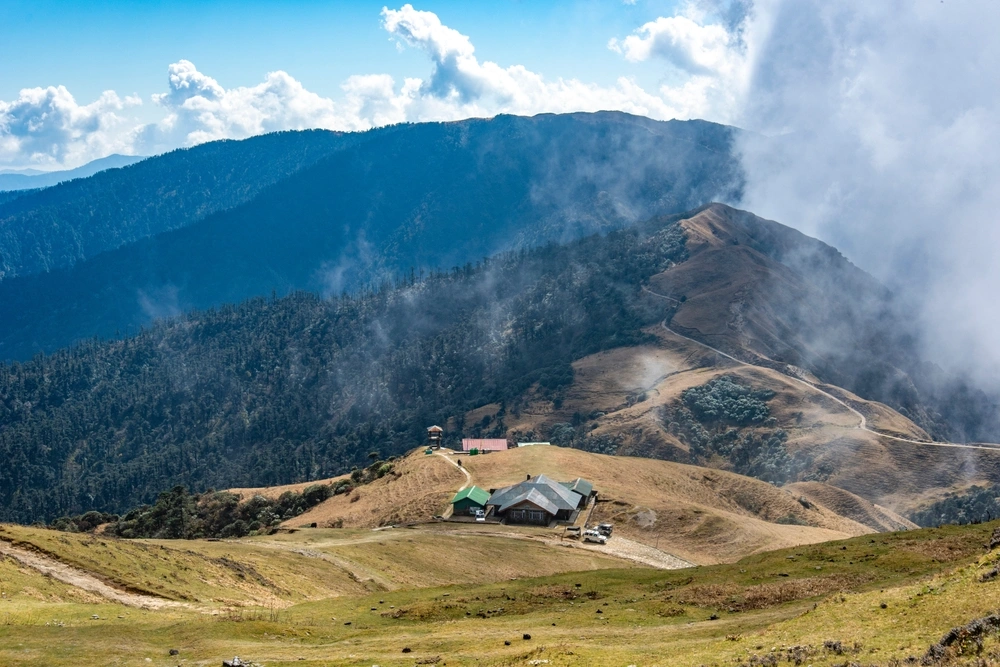
“Sandakphu is not a trek, it is a journey through one of the most natural gallery, presented by nature.” – Local Trek Guide
Why Choose Sandakphu Trek?
- Unparalleled mountain views: Clear sight of the world’s highest peaks
- Cultural immersion: Experience Sherpa, Nepali, and Bengali mountain cultures
- Diverse ecosystem: Trek through multiple climate zones and vegetation types
- Moderate difficulty: It is also aimed at beginners of low fitness levels
- Photography paradise: Capture stunning sunrise and sunset views
Best Time to Visit
| Season | Months | Weather Conditions | Visibility | Recommended |
| Spring | March – May | Pleasant, mild temperatures | Excellent | ⭐⭐⭐⭐⭐ |
| Autumn | October – December | Clear skies, crisp air | Outstanding | ⭐⭐⭐⭐⭐ |
| Winter | January – February | Cold, possible snow | Good | ⭐⭐⭐ |
| Monsoon | June – September | Heavy rainfall, cloudy | Poor | ⭐ |
Spring (March to May) and Autumn (October to December) are considered the best times for the Sandakphu Trek. In spring, the rhododendrons bloom in the trail and in autumn, there are awesome views of the misty mountains with comfortable temperatures.

Trek Difficulty and Duration
Sandakphu Trek is a moderate difficulty trek thus, the best trek to venture into as a new trekker and one that is in the intermediate level. Generally, the hike takes around 6-7 days during which one traverses an estimate of 32 kilometers of clear trails.
Physical Requirements
- Basic cardiovascular fitness
- Ability to walk 4-6 hours daily
- Technical climbing experience is not necessary
- Suitable for ages 12-65 years
Altitude Considerations
- Starting elevation: 7,054 feet (Manebhanjan)
- Maximum elevation: 11,930 feet (Sandakphu)
- Gradual climbing height increases the height of altitude sickness
- Proper acclimatization recommended
Complete Itinerary
Day 1: Arrival in Darjeeling
- Arrive in Darjeeling
- Equipment check and briefing
- Overnight stay in hotel
- Elevation: 7,100 feet
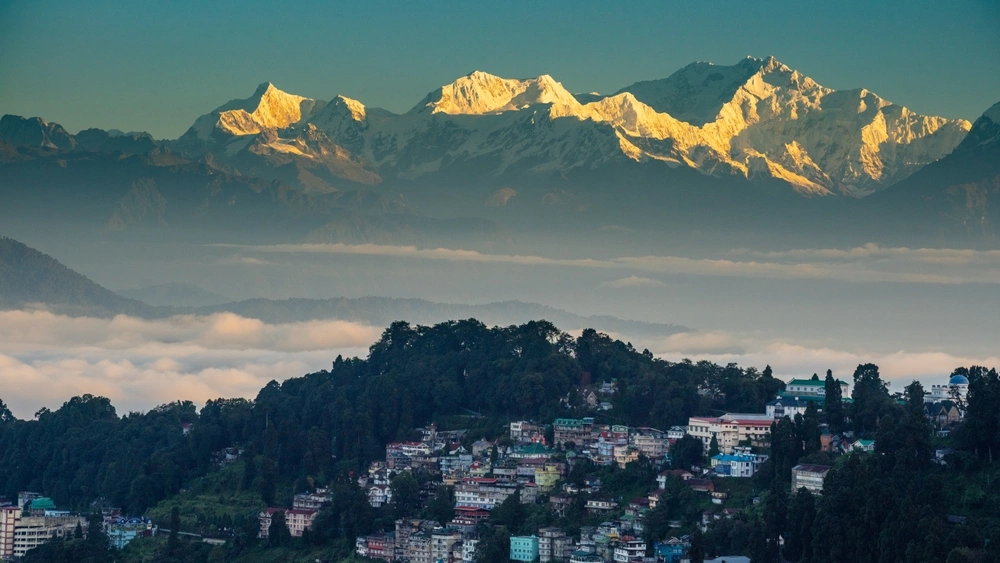
Day 2: Darjeeling to Tumling
- Drive to Manebhanjan (1 hour)
- Trek to Tumling (3-4 hours)
- First glimpse of Kanchenjunga
- Distance: 11 km | Elevation: 9,600 feet
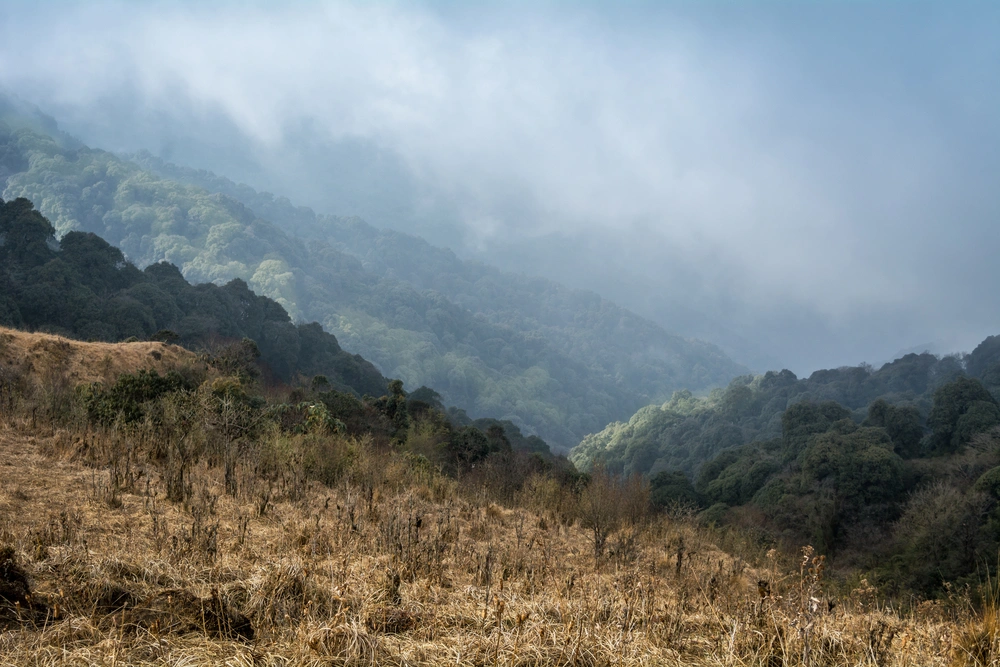
Day 3: Tumling to Kalapokhri
- Trek through Singalila National Park
- Cross multiple ridges and valleys
- Spot diverse bird species
- Distance: 13 km | Elevation: 10,400 feet
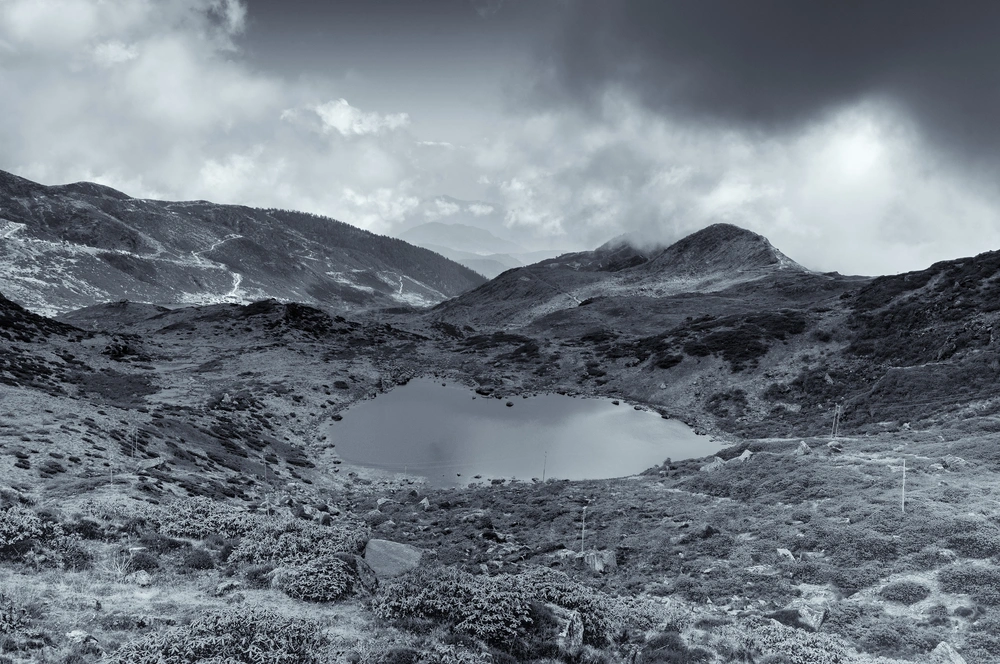
Day 4: Kalapokhri to Sandakphu
- Summit day to high point.
- 360-degree mountain panorama
- Sunset views of Himal triangular peaks
- Distance: 6 km | Elevation: 11,930 feet

Day 5: Sandakphu to Gurdum via Phalut
- Early morning sunrise photography
- Trek to Phalut (second highest point)
- Descend to Gurdum village
- Distance: 18 km | Elevation: 7,900 feet
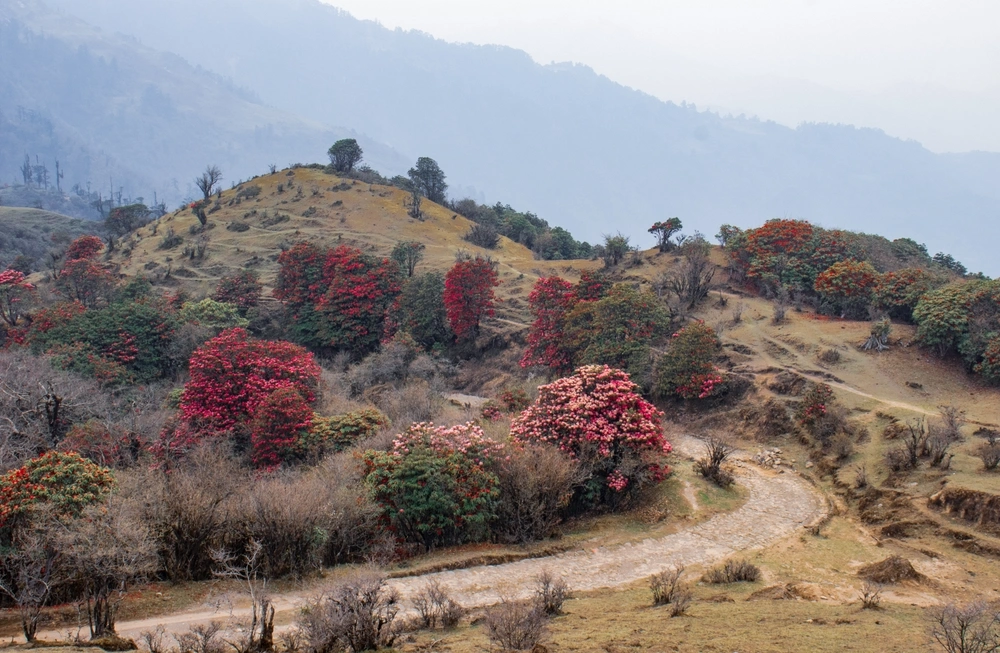
Day 6: Gurdum to Srikhola
- Final descent through forests
- There are bridges and streams to cross several times
- Vehicle pickup point
- Distance: 8 km | Elevation: 6,400 feet
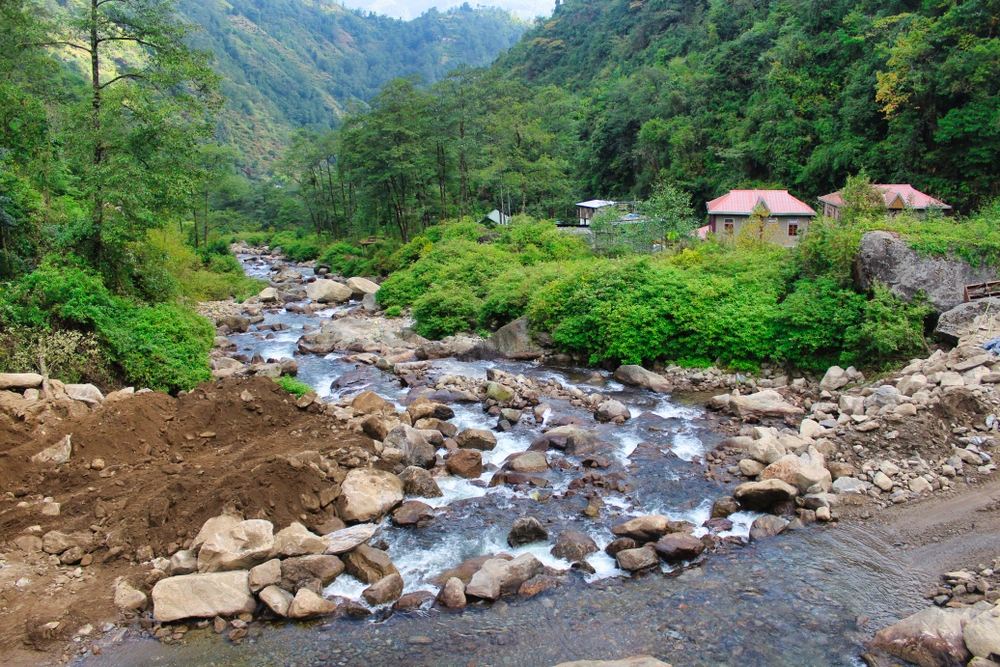
Day 7: Return to Darjeeling
- Drive back to Darjeeling
- Trek completion celebration
- Departure preparations

Permits and Documentation
| Document Type | Required For | Cost (Approx.) | Validity |
| Forest Permit | Singalila National Park | ₹100 per person | Trek duration |
| Trekking Permit | Local administration | ₹50 per person | 7 days |
| Photo ID | All participants | Free | Valid document |
Essential documents to carry:
- A valid ID Proof – photo of (Passport/Aadhaar/Driving Licence)
- Medical fitness certificate (recommended)
- Travel insurance documentation
- Emergency contact details
Note: The permits are usually organized by the trekking companies but the individuals who wish to undergo the trek as an independent trekker must obtain the permits.
What to Pack
Essential Clothing
- Base layers: Moisture-wicking thermal wear
- Insulation layer: Fleece or down jacket
- Shell layer: Waterproof and windproof jacket
- Trekking pants: Quick-dry and comfortable
- Warm hat and gloves: Essential for high altitude
- Sun hat: Protection during day treks
Footwear and Accessories
- Trekking boots: Waterproof and ankle support
- Camp shoes: Lightweight slippers or sandals
- Trekking socks: Wool or synthetic blend
- Gaiters: Prevent debris entry
- Trekking poles: Reduce knee strain
Technical Equipment
- Backpack: 40-50 liters capacity
- Sleeping bag: Rated for -10°C temperatures
- Headlamp: With extra batteries
- Water bottles: 2-3 liters capacity
- First aid kit: Basic medications and bandages
- Sunglasses: UV protection essential
Accommodation Options
The Sandakphu trekking route has various alternatives of accommodation that are basic lodges and camping:
Lodge Accommodation
- Basic facilities: Shared rooms with simple beds
- Common dining areas: Local cuisine available
- Limited amenities: Basic toilets and washing facilities
- Cost: ₹500-800 per person per night
Camping Option
- Tent accommodation: Provided by trekking companies
- Sleeping bags required: Bring personal or rent
- Outdoor experience: Sleep under starlit skies
- Cost: Included in package tours
Homestays
The one where it is provided in lower altitude villages, with cultural immersion and home cooked food.
Food and Water
Meal Options
- Dal Bhat: Traditional Nepali rice and lentils
- Momos: Steamed dumplings with vegetables or meat
- Tibetan bread: Flatbread with local vegetables
- Hot beverages: Tea, coffee, and hot chocolate
Water Sources
- Natural springs: Available at most campsites
- Purification essential: Use tablets or UV sterilizers
- Bottled water: Available but environmentally discouraged
- Recommended intake: 3-4 liters per day at high altitude
Transportation
| Route | Mode | Duration | Cost |
| Kolkata to Darjeeling | Train + Taxi | 14 hours | ₹2,000-3,000 |
| Delhi to Darjeeling | Flight + Taxi | 8 hours | ₹8,000-12,000 |
| Darjeeling to Manebhanjan | Shared jeep | 1 hour | ₹100-150 |
Getting There
- Nearest airport: Bagdogra (68 km from Darjeeling)
- Nearest railway: New Jalpaiguri (68 km from Darjeeling)
- Road connectivity: Well-connected by state highways
Safety Tips
Pre-Trek Preparation
- Medical checkup: Consult physician before departure
- Fitness training: Start 6-8 weeks before trek
- Altitude awareness: Learn about altitude sickness symptoms
- Insurance coverage: Ensure comprehensive travel insurance
During the Trek
- Stay hydrated: Drink water regularly
- Listen to your body: Rest when feeling unwell
- Follow guide instructions: Experienced guides know the terrain
- Weather awareness: Pack a variety of clothing ready against sudden changes in weather
- Emergency contacts: Keep rescue numbers handy
Emergency Procedures
- Evacuation routes: Multiple descent paths available
- Communication: Mobile network available at some points
- Rescue services: Local helicopter rescue operations
- First aid training: Basic knowledge recommended
Cost Breakdown
Budget Trek (DIY)
- Permits and fees: ₹500-800
- Accommodation: ₹3,500-5,000
- Meals: ₹2,000-3,000
- Transportation: ₹2,000-4,000
- Total: ₹8,000-12,800
Organized Trek Package
- 6-day package: ₹15,000-25,000 per person
- Includes: Guide, permits, meals, accommodation
- Excludes: Personal equipment, tips, personal expenses
Additional Costs
- Equipment rental: ₹2,000-4,000
- Porter services: ₹800-1,200 per day
- Tips: ₹1,000-2,000 total
Photography Tips
Best Shooting Locations
- Tumling: First views of Kanchenjunga
- Sandakphu summit: 360-degree panorama
- Phalut: Alternative angle of major peaks
- Sunrise spots: Multiple locations along the ridge
Recommended Settings
- Golden hour photography: Early morning and late evening
- Landscape settings: Wide angle lens preferred
- Mountain photography: Use polarizing filters
- Wildlife shots: Red pandas and birds long telephoto lenses
Equipment Care
- Battery protection: Cold weather drains batteries quickly
- Moisture control: Use silica gel packets
- Backup storage: Multiple memory cards essential
- Lens cleaning: Dust and moisture common issues
Conclusion
Sandakphu Trek provides an absolute first step in Himalayan trekking with its exquisite mountains, cultural diversity and scenic beauty combined in one phenomenal trek. This trek through Sikkim Himalaya offers trekking enthusiasts the pleasure of seeing some of the most beautiful mountains in the world as one gets to experience the warmth and hospitality of the communities living in the mountains.
Under the right preparation, right time, and right equipment, the Sandakphu Trek is a possibility for any trekker at different levels of experience. The experiences in this trip, including the first sight of giants, the friendship with new people met along the way, will be remembered forever.
When you are preparing team members to organize a trip to Sandakphu Trek in 2025, it is important to remember that it is not only a journey that requires physical effort but it is also a trip that allows you to enjoy nature, to set limits and to find yourself in the exceptional beauty of the Eastern Himalayas. Sandakphu is the place that can fulfill any of our expectations whether you are an adventurous spirit or seek photography or just want to have a breather away in the city life.
“The mountains are calling, and Sandakphu answers with one of nature’s most spectacular displays.”
FAQ
1. What is the best time to do the Sandakphu Trek?
Sandakphu Trek is best suited in spring (March to May), and in autumn (October to December). These are the most clear months of views of the mountains, good climatic conditions, and the best visibility of the Himalayan peaks. Spring is the time when rhododendrons flower and autumn allows photographing crystal clear skies.
2. How difficult is the Sandakphu Trek for beginners?
The Sandakphu Trek is of moderate severity and as such, fits perfectly into the category of people that lack the prowess of talking much about fitness. The hike is not a technical climb as it has soft inclines, clearly man cloven paths, and unimpressive. But trekkers must possess sound cardiovascular fitness and capacity to walk 4-6 hours on high altitude per day.
3. Do I need special permits for the Sandakphu Trek?
Yes, there must be forest permits to Bankala and Singalila National Park and trekking permits to local administration. These are about 150-200 per human being in total. Permit arrangements (usually through an organized trek company) should be made in advance by most companies, though individual travellers are required to get permits firsthand in the Manebhanjan or Darjeeling forest offices.
4. What should I pack for the Sandakphu Trek?
Recommended gear and equipment are base layer, insulation, outer shell, waterproof trekking boots, sleeping bag rated at -10C, warm accessories such as hat, gloves, headlamp, water bottles, First aid kit, and sunglasses. The trick consists of a layering system of changing temperatures and weather types faced on the way.
5. How much does the Sandakphu Trek cost?
The cost of Sandakphu Trek will hugely depend on how you choose to do the trek. Low-end DIY hikes are between 8-12,800/pax with organized tours being between 15-25,000/pax. Other costs will be equipment hire ( 2,000- 4,000 ), porter help ( 800-1,200 per day ) and personal costs. Fees are determined by the type of accommodation, the meal plan and the level of services one takes.







